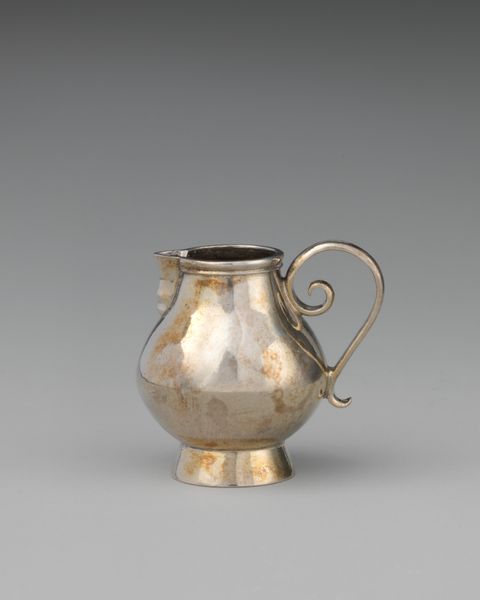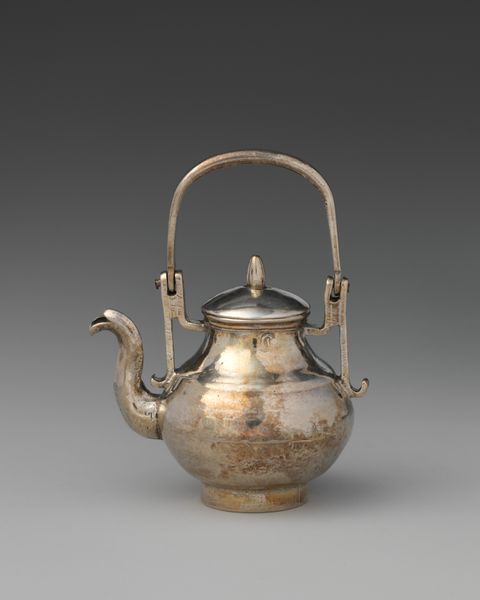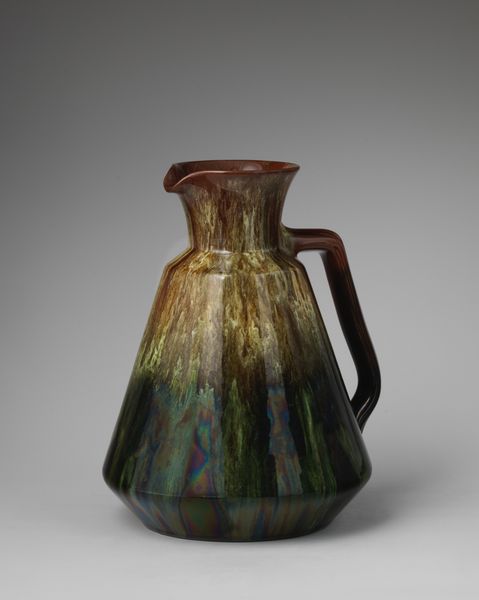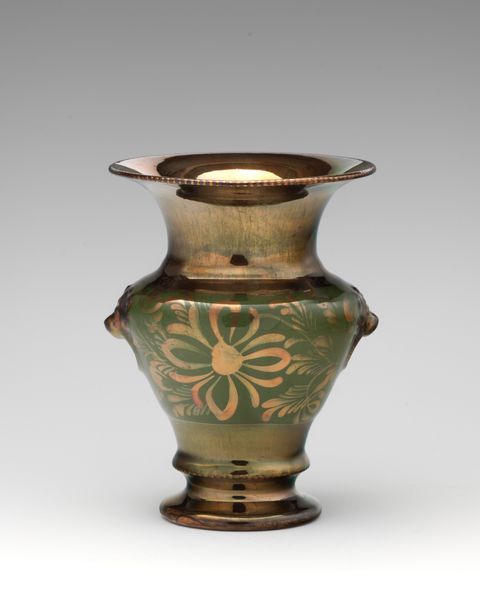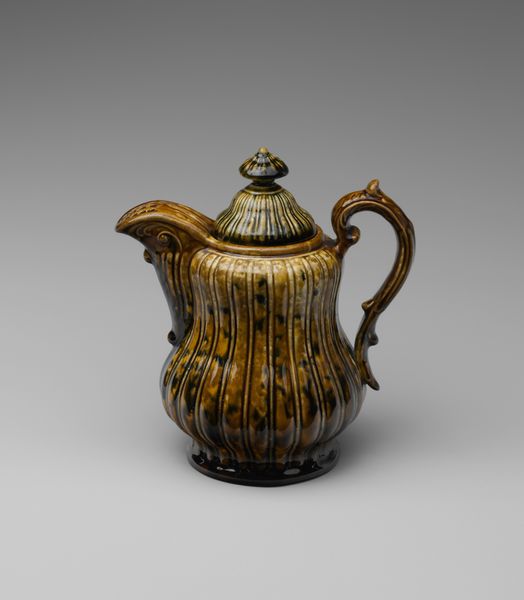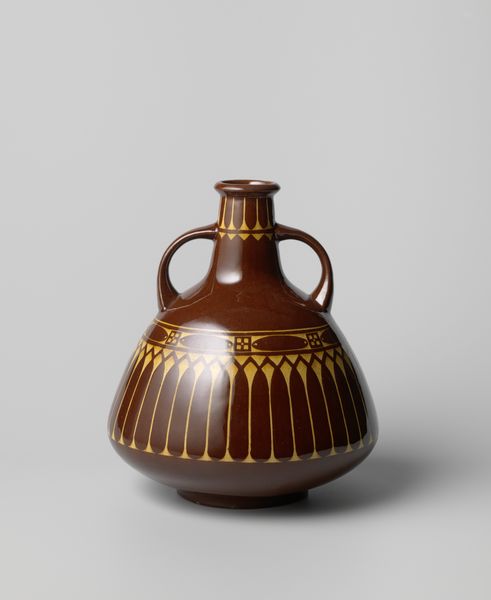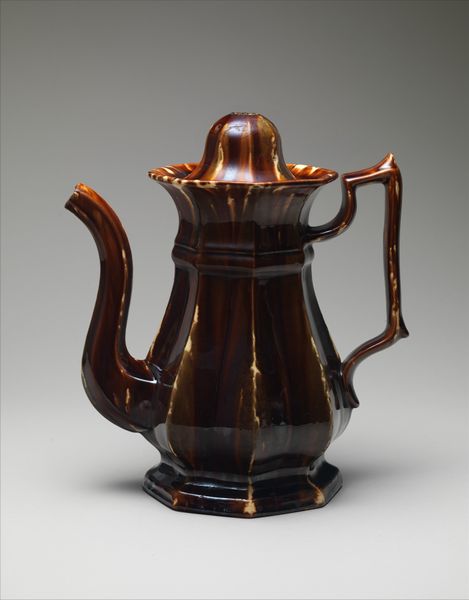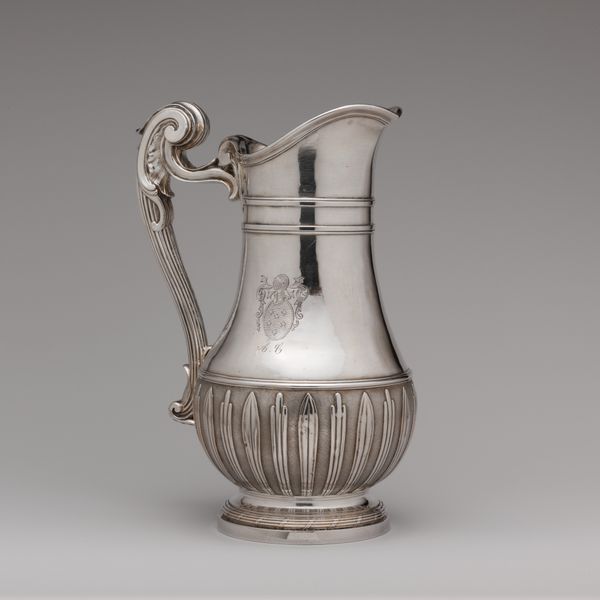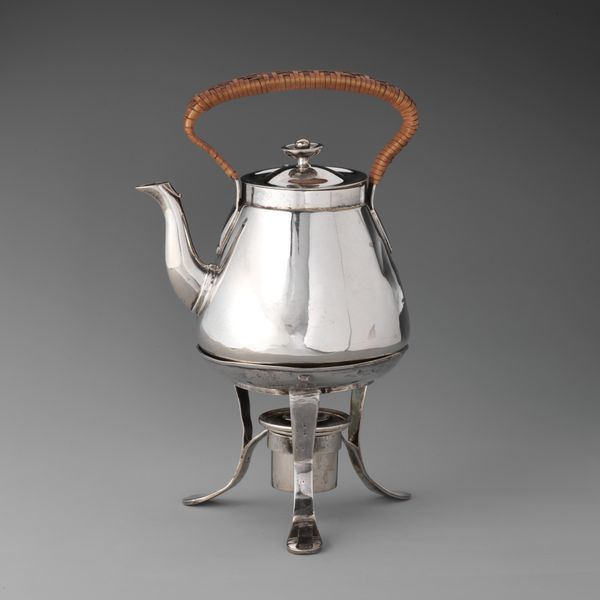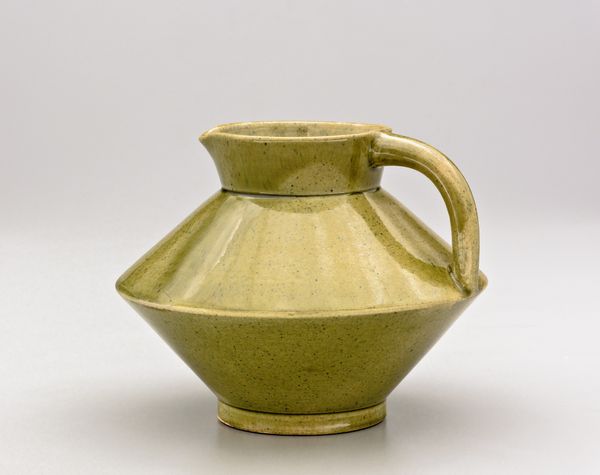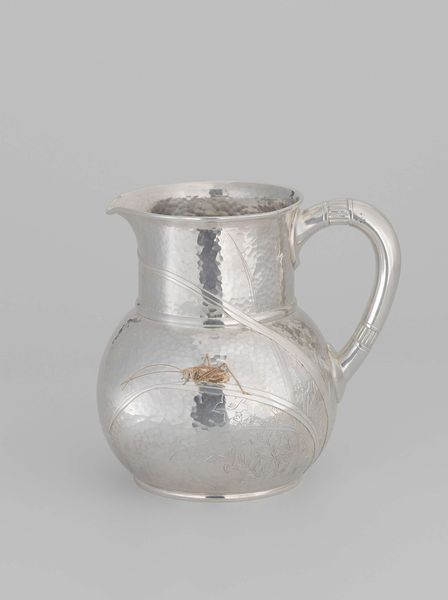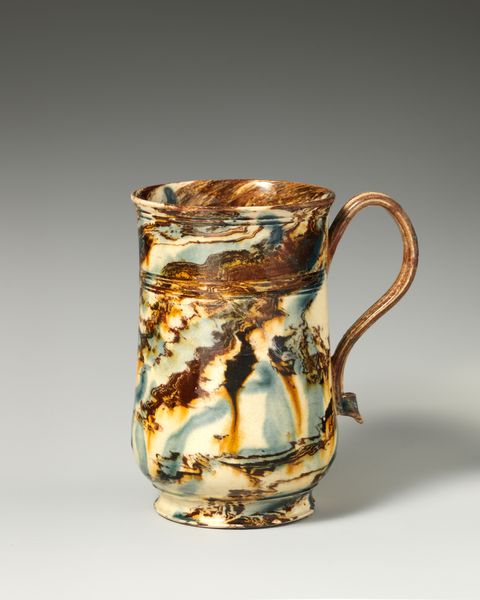
ceramic, sculpture
#
ceramic
#
sculpture
#
decorative-art
Dimensions: Height: 5 1/8 in. (13 cm)
Copyright: Public Domain
Editor: So, this is a 19th-century ceramic jug from the Tunstall factory. It’s surprisingly shiny and ornamented. It's catching the light and has quite elaborate gilded patterning. What's your take on this decorative art piece? Curator: I see echoes of ancient amphorae and the Victorian obsession with status expressed through gleaming surfaces and detailed design. Look at the repeated horizontal lines and the stylized, almost Egyptian floral patterns. What cultural memory does it evoke for you? Editor: It almost feels…staged. The metallic sheen suggests luxury, but it's just a jug, after all. Do you think the maker was intentionally playing with these conflicting ideas? Curator: Absolutely. The shine is crucial; consider it against a backdrop of industrializing cities where even ordinary tableware emulated the gold and silver of aristocracy. Notice the almost totemic symmetry: horizontal stripes balanced with curving flowers. What kind of social or psychological effect does that striking tension have on the user? Editor: I hadn't thought of that – it's not just about the surface, but also the power of suggestion and aspirations of a growing middle class. Curator: Precisely! This Tunstall jug reminds us that decorative objects carry narratives of desire, status, and aspiration, reflecting a very human need to infuse our lives with meaning through visual symbols. Editor: Thanks – I’ll definitely think differently about how decorative arts communicate symbolic messages in their specific cultural contexts.
Comments
No comments
Be the first to comment and join the conversation on the ultimate creative platform.
